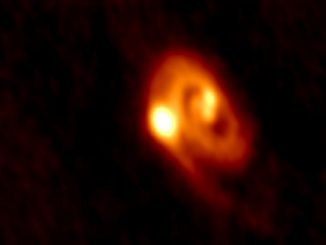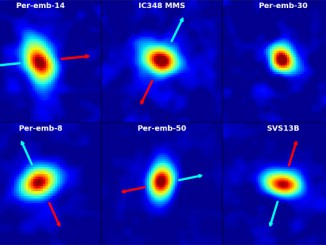
Perseus molecular cloud


ALMA witnesses the birth of a triple-star system
A rare triple-star system surrounded by a disc with a spiral structure has been discovered by a global team of researchers. Recent observations from the Atacama Large Millimetre / submillimetre Array (ALMA) resulted in the discovery, lending support for evidence of disc fragmentation — a process leading to the formation of young binary and multiple star systems.

VLA reveals dramatic new evidence about star and planet formation
A detailed study of young stars and their surroundings has produced dramatic new evidence about how multiple-star systems form and how the dusty discs that are the raw material for planets grow around young stars. Scientists used the Very Large Array (VLA) radio telescope to study nearly 100 newborn stars in a cloud of gas and dust about 750 light-years from Earth.

The minimum mass of a proto-solar system disc
Astronomers studying the birth of planetary systems in the young (about 2-3 million years old) star forming region IC348 in Perseus as seen by the infrared cameras onboard the Spitzer Space Telescope have found thirteen stars in this complex with detectable discs, none of which is as massive as our early solar system’s disc.
